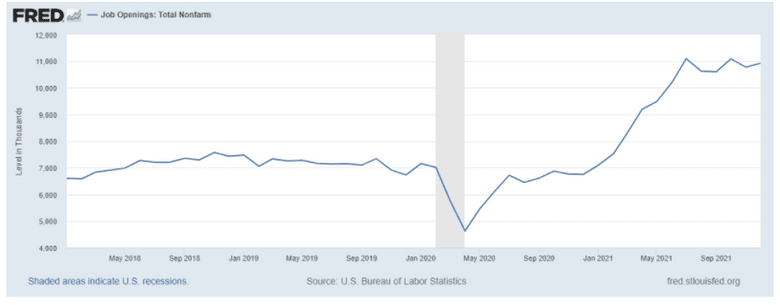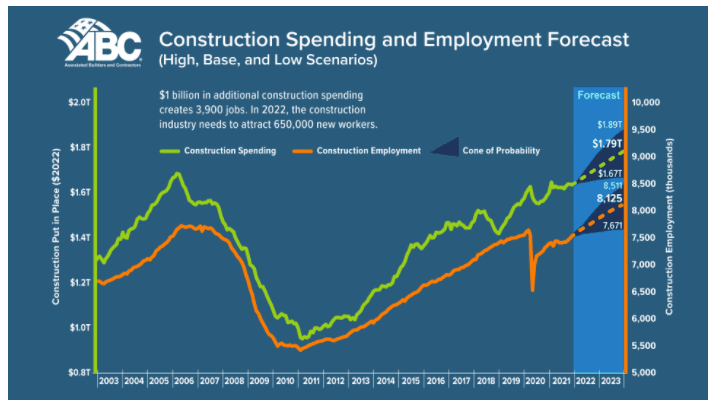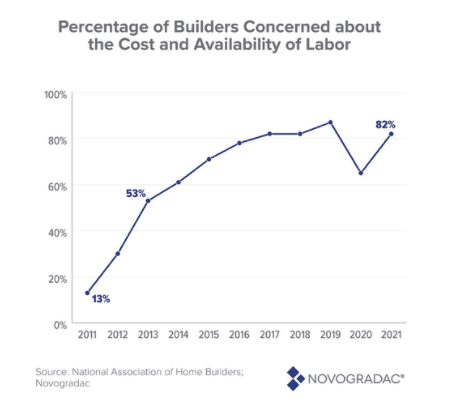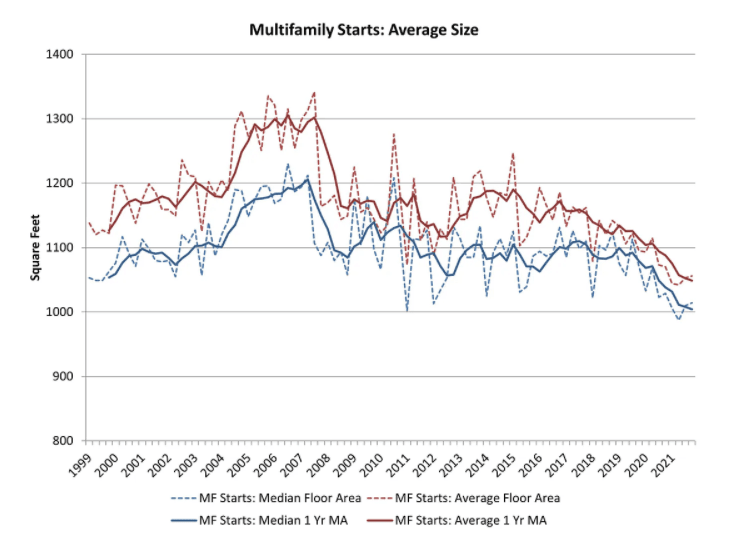The Story
We have a labor shortage across the board in the U.S. There are currently almost 11 million job openings across the country, many of them in construction. This will have important implications for real estate developers.
According to Goldman Sachs, our labor shortage has reached “the most overheated level in postwar US history.”
These shortages affect a number of aspects of the multifamily business, particularly in construction and property management. According to a forecast model developed by the Associated Builders and Contractors (ABC), the construction industry alone needs about 650,000 additional workers in addition to the current normal hiring pace to meet demand.
Real estate owners should expect unpredictable timing for construction, as well as an increase in costs. Here are some data points to help situate our thinking.
- A recent survey by AppFolio and the National Apartment Association found that 74% of property professionals said: “staffing and recruitment was their top challenge.”
- Heightened labor competition has resulted in an increase in signing bonuses and a jump in salaries of 10-15%.
- Immigration isn’t helping as the backlog at the US Citizenship and Immigration Services (USCIS) has reached a crisis level—there are now 1.48 million pending work visa applications.
- There has been a decline in the number of construction workers aged 25-54, which fell 8% since 2012 as the share of older workers exiting soared.
- The construction industry’s average retirement age is 61, and more than 1 in 5 construction workers are 55+.
These challenges can hurt investors and owners. According to Jay Parsons, VP at RealPage, a typical multifamily construction project now takes 10-20% longer than it did a few years ago.
For owners and managers, hiring property management professionals will become more costly and challenging with fewer candidates and increased competition. Expect to pay higher singing bonuses and salaries, and explore ways to support your current workforce to keep them in place.
Despite these headwinds, the multifamily market has still outperformed. According to NAHB, the Multifamily Production Index (MPI) increased by one point to 54 from Q4 2021. Further, construction starts overall increased 4% between December 2021 and January 2022. This tells us that demand is strong enough to compensate for the above labor challenges.
Expert Take
“The workforce shortage is the most acute challenge facing the construction industry despite sluggish spending growth…After accounting for inflation, construction spending has likely fallen over the past 12 months. As outlays from the infrastructure bill increase, construction spending will expand, exacerbating the chasm between supply and demand for labor.” — Anirban Basu, chief economist, ABC
So What?
Finding and retaining good workers will be the biggest challenge and opportunity for multifamily owners and investors in the coming years. Further, automating aspects of your assets and operations that traditionally needed a human touch will help hedge against the current and looming labor shortage.
This Week’s Top Headlines
- The Russian invasion of Ukraine will put downward pressure on interest rates and could dampen homebuyer demand due to economic uncertainty and rising energy costs — Redfin
- Inflationary pressures that typically raise interest rates will be dampened by the invasion of Ukraine — Housing Wire
- The Multifamily Occupancy Index (MOI) (measures the multifamily housing industry’s sentiment on occupancy) decreased six points to 69. This is still above the break-even point at 50 (below which would indicate rising occupancy) — NAHB
- After a record year, the apartment market in 2022 is expected to slow — Globe St
- New data shows that while multifamily construction increased in rural areas in 2021, growth rates were notably higher in large metros — Rismedia
- Multifamily loan originations were 79% higher in Q4 2021 compared to Q4 2020, and jumped 44% from Q3 2021 — MHN
Weekly Chart
According to NAHB, multifamily unit sizes are trending lower.




